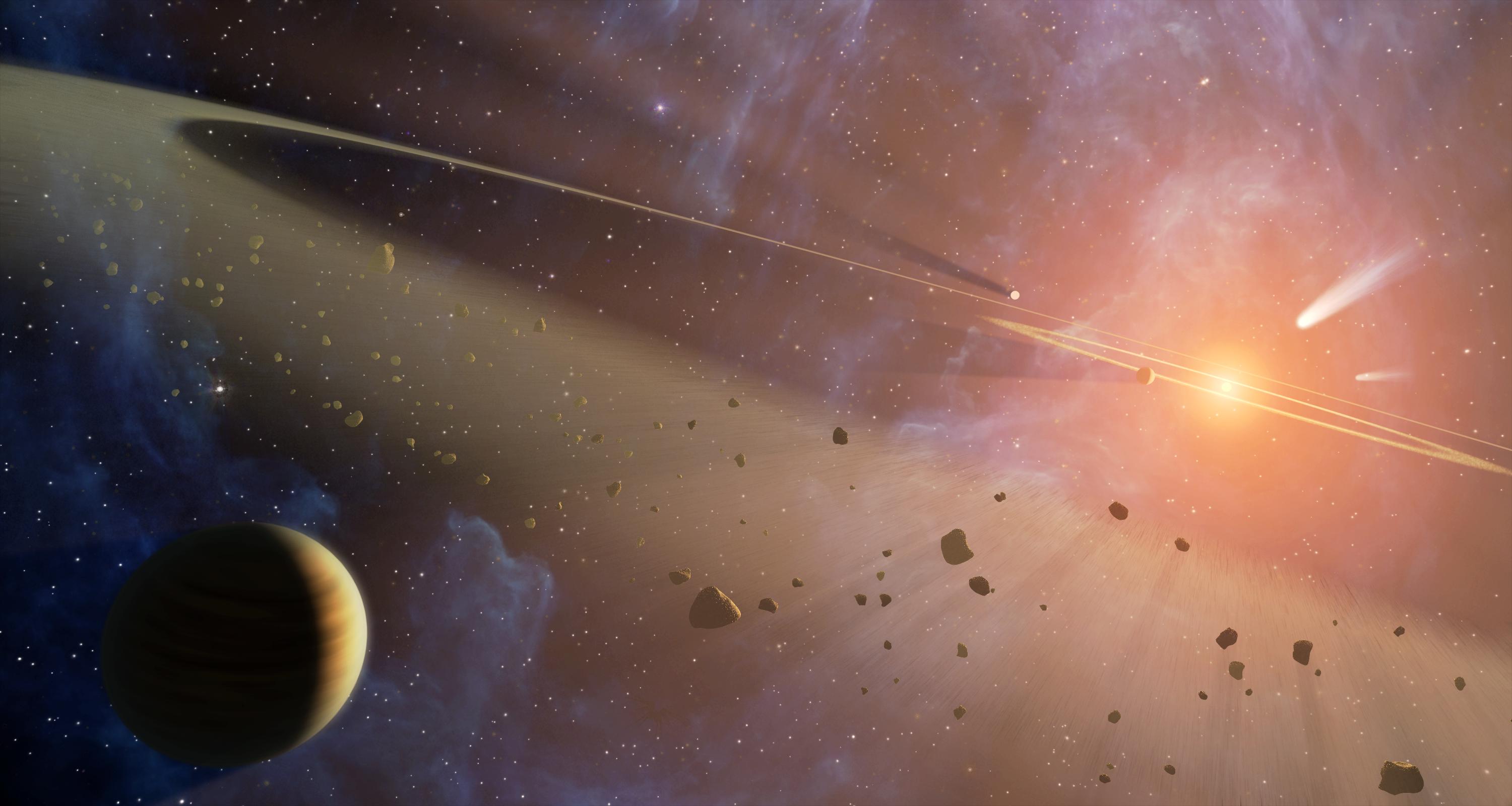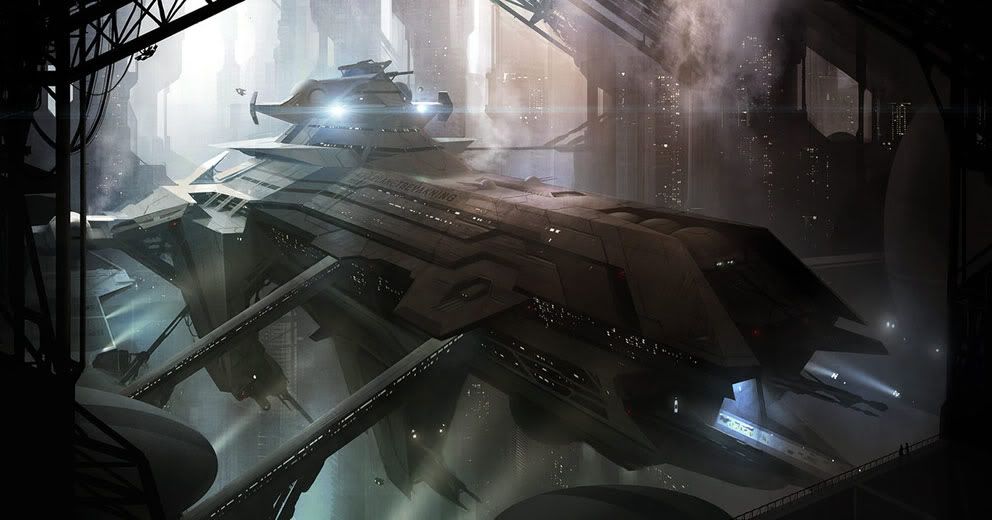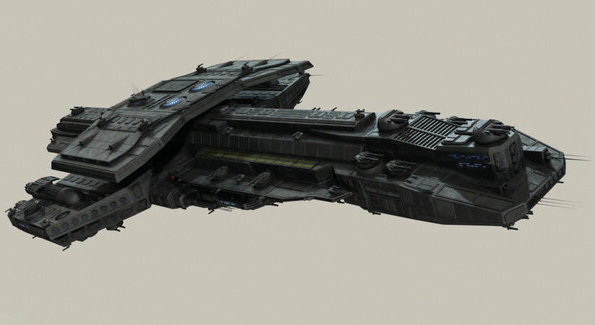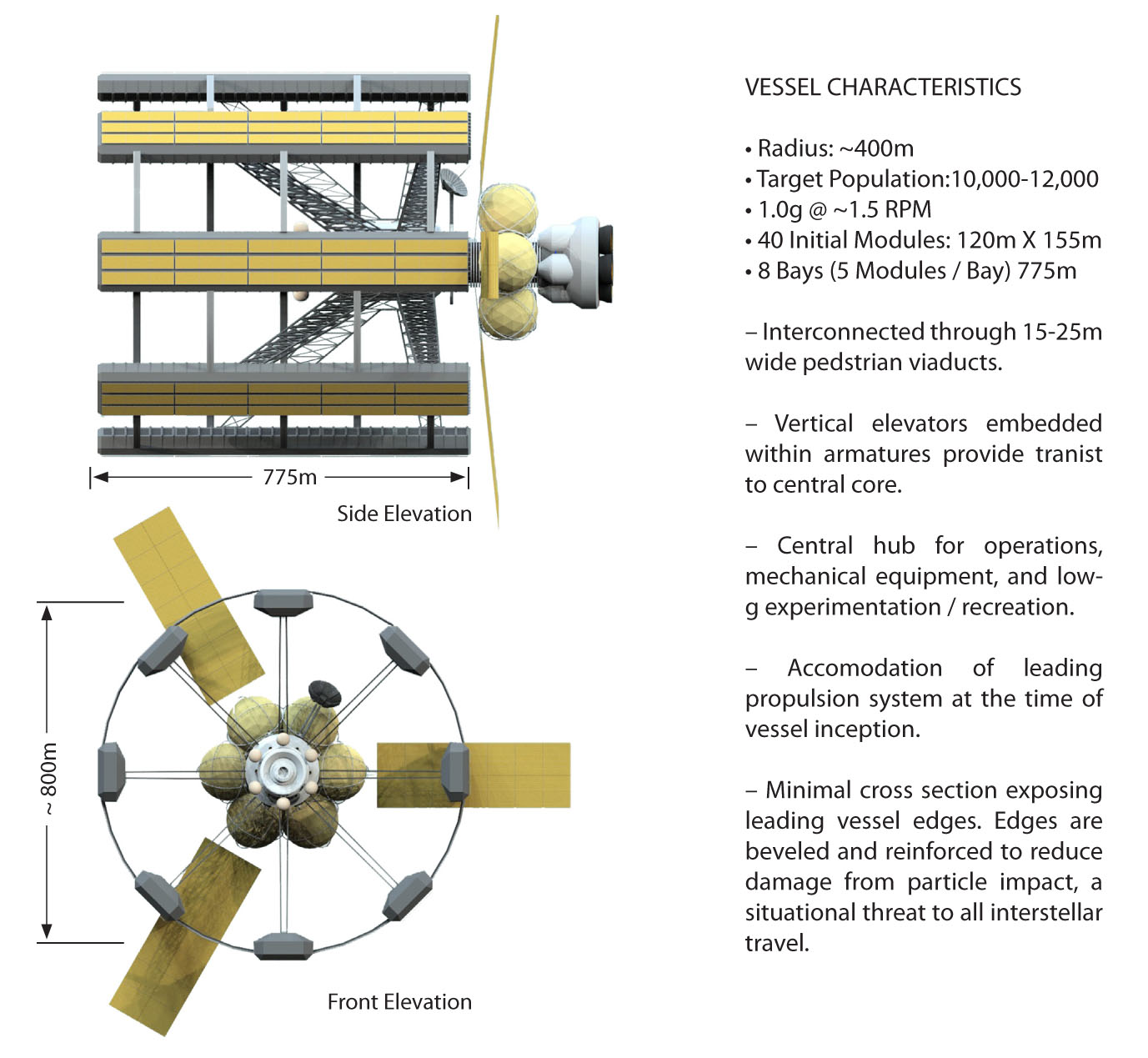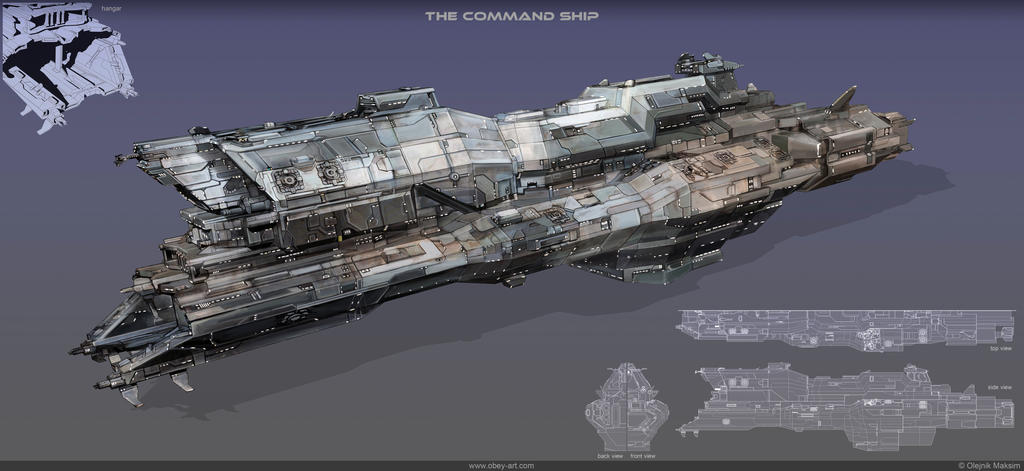Ship Name: EUV Saratoga (formerly
USS Saratoga)
Description: The George Washington class was originally envisioned as a heavy attack cruiser for the United States Aerospace Command, a great warship that could rival the carriers of the 21st century in its ability to project force overseas. With a length of two kilometers at its furthest point and a width of two hundred meters, the four prototypes of the class (USS George Washington, USS Saratoga, USS California and USS Pearl Harbor) housed a powerful endo/exo atmospheric hybrid fighter wing, had space and accommodations for two full Marine battalions and could theoretically withstand prolonged engagements with ships of the Russian Federation, People's Loyal Navy and pirate vessels.
But most importantly, they were to become test-beds for experimental faster-than-light technology. The Einstein-Rosen Spacetime Bridge Drive was the first example of a faster-than-light engine to not only pass the decades of theoretical scrutiny with flying colors, but also be considered practically feasible. A prototype engine of this kind was installed in the
George Washington, and during a test run, an attempt was made to activate it. The vessel moved to a safe distance from Earth's gravity well, spooled up the extensive computers that managed the drive, and activated it. Instead of emerging in orbit of Mars, however, the
Washington was instead destroyed with all hands. With five thousand dead, the FTL drive project was scrapped, and the remaining ships fell into obscurity.
After decades of budget cuts and a dwindling need for such a weapon of mass destruction, the three unfinished prototypes were sold off to the European Union for scrap, and re-purposed as escort vessels for colony ships in order to protect them from pirate attacks and calm the public outrage over the devastating loss of the
'Charles de Gaulle', a colony vessel that was plundered by a raider group and then scuttled only two years prior. The
Saratoga was overhauled, replacing two of its four fighter bays with ammunition and fuel storage facilities for extended escort missions.
The Saratoga's primary purpose is, above all, to be a warship, and a good warship at that. Despite the numerous cuts to its R&D budget, the ship houses several innovative technological advancements to ensure dominance in the battlefield. Its primary weapon system is the Westinghouse Mark 17 Rail Artillery System, a spinal alignment weapon that runs the entire length of the ship: the powerful electromagnetic acceleration system can fire nuclear-tipped artillery shells at a meaningful fraction of the speed of light, rendering any attempts at interception futile, and can be used both to get an edge over slow-moving warships and for planetary bombardment. The weapon, however, is one of many systems that are too impractical for daily use due to the fact that in space, everything keeps moving. Instead, the ship's most used armaments are the 72 General Electrics Magnetic Acceleration Cannons, which form an array of variable-range, multi-purpose attack weapons that can be used to both create an impenetrable flak barrier around the ship and attack other targets with a variety of shells.
Complementing these projectile weapons, the European refit of the Saratoga replaced its old torpedo launch tubes with twelve variable-warhead Vertical Launch Systems, most often used to launch anti-ship missiles. A little known fact is that these tubes are also capable of firing nuclear weapons, both for ground-strike and ship-to-ship purposes, and the Saratoga was provided with a very limited stock of both types. Rumors circulating amongst the crew claim that the ship's nuclear missile stocks are as low as six ship-to-ship warheads and one ground-strike MIRV or as high as twenty ship-to-ships and ten MIRVs. Some claim that, because the warheads were expected to see no use, some of them were dismantled to acquire parts to maintain the more vital defensive missile systems.
To defend itself, the Saratoga is equipped with several meters' thick composite armor, varying in thickness depending on the location, sandwiching a system of electric-reactive plating. The two systems can shrug off small caliber fire and are combined with a smart threat prediction system to reinforce the defenses in critical sections, such as the engineering compartment or the fuel tanks. Because a nuclear strike can decimate the ship, a series of CIWS projectile weapons, point defense lasers and a missile interception system can destroy warheads or bombers that venture too close to the hull. A thirty micron thick ablative coating can allow the hull to sustain prolonged laser fire. Finally, the Saratoga can deploy a full fighter wing (although half the size, by American standards) to both defend itself from enemy fighters, or conduct attack, recon and close air support missions in both space and on the ground.
The ship's most fatal flaw, however, is its lack of independence. Although its fuel and ammunition reserves are enough to last several engagements, the ship's water recycling system is not 100% effective, the food in storage can only last for so long, and the military-grade medications in its undersized medical bay are present in minute quantities. As such, the Saratoga is forced to be part of a larger fleet formation that can cover its needs, as well as provide it with the workforce necessary for repair and maintenance. The vessel is also very uncomfortable to live in: whereas most ships in the colonization fleet can comfortably house over ten thousand people, the five thousand soldiers, pilots and engineers of the Saratoga are forced to survive in cramped conditions, utilizing hot-bunking and sharing bathrooms and showers. The tiny corridors of the ship are a perfect breeding ground for a disease outbreak waiting to happen.
Population: 4,879
Description: Recruited on a volunteer-only basis, special care was taken to ensure that the people onboard the ship did not have any significant attachments back home: married EU citizens were excluded except for rare cases where both themselves and their spouses were active duty military and volunteered for the mission, and ideally, people who had no parents, siblings or other family members were picked. The overwhelming majority of the crew are active duty military (only 67 civilians are present aboard, including several intelligence analysts and some scientists), but a very tiny number of them are infantrymen. The Saratoga's ground combat element is a single Battalion numbering 418 European Union Naval Marines and a Special Forces platoon. Their equipment includes all-environment combat gear, three main battle tanks and several support vehicles.
Despite the strict fraternization regulations, the ship's commanding officers have let relationships between crew members go on without punishment for the sake of morale.
Captain Name: Oberst / Colonel Erika Wechsler
Description: Originally a fighter pilot for the Luftwaffe, Colonel Wechsler made a career out of exo-atmospheric combat: she wrote the book on modern fighter warfare and pioneered the overhaul of the European Union's Air Force, which included modernizing the aging fleet of space-age Harriers and Mirages and replacing them with the Eurofighter Tornado. Despite her numerous achievements and decorations, her promotion to flag officer was never approved due to her eccentric character and rivalries with several of the Union's command staff. The short redhaired officer spent most of her life in Low Earth Orbit, and at age 34 accepted the assignment to the Saratoga's escort mission as a means of escaping the bureaucrats.
Other Notable Individuals:Capitaine de frégate / Commander Michaël DaniauA hardliner careerist officer in the Marine Nationale, the French-born Commander spent most of his life sucking up to flag officers and scheming behind a computer instead of fighting wars. He represents a more pragmatic, individualist approach to the Colonel's idealism, and despite serving twenty years as her Executive Officer, he maintains a love-hate relationship with her: they hardly ever agree on a course of action, and when they do, it's an indication that something has gone terribly wrong.
Överstelöjtnant / Lieutenant Colonel Laila HanssonThe only officer onboard with the same paygrade as the Executive Officer, Lt. Colonel Hansonn serves as the commanding officer of the 17th European Colonial Marine Battalion, and shares the responsibilities of ship-borne security with the Master-at-Arms. She can best be described as a hot-headed timebomb waiting to go off, especially after a recent pregnancy that demonstrated just how obsessed she is with her job, and has on more than one occasion demonstrated a complete inability to cooperate with the XO.
Notes: I tried my best to keep the ship's military prowess reasonable enough to be used as an escort, and to balance it out with a complete reliance on civilian vessels.
